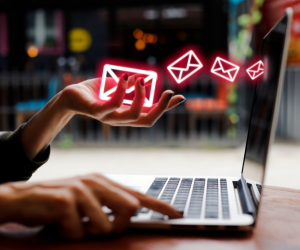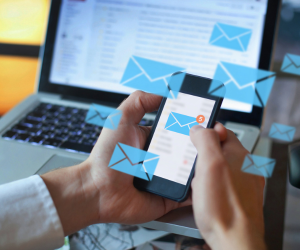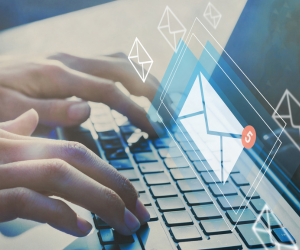Step-by-Step Guide: How to Write an Email Message That Gets Results
Welcome, fellow wordsmiths and aspiring email maestros! Are you ready to dive into the captivating world of email communication? In this blog post, we’ll embark on a delightful journey, unlocking the secrets to crafting email messages that grab attention, elicit responses, and ultimately get you the results you desire.
Here is a video from Darren Olander that will teach you how to write e-mails that demand attention. He is the creator and owner of a viral list builder called Achiever.
>> Click Here To Join Adchiever For FREE
Writing an email might seem like a mundane task, but when done right, it can be a powerful tool in your arsenal. Whether you’re a professional seeking to make a lasting impression or a witty friend who loves to sprinkle humor in your messages, we’ve got you covered. Our step-by-step guide will take you from a simple email to a compelling masterpiece that leaves recipients eagerly tapping their keyboards to respond.
But hey, we won’t stop at mere effectiveness. We’ll infuse some humor into our writing along the way, making this journey as entertaining as it is informative. So buckle up, grab your favorite beverage, and let’s embark on this adventure together.
From crafting attention-grabbing subject lines to mastering the art of persuasive language, we’ll explore every aspect of writing an email message that not only captures attention but also elicits the desired action. Along the way, we’ll share some witty tips and tricks to sprinkle your personality into your messages and make them truly memorable.
So, whether you’re a professional seeking to seal the deal, a job seeker aiming to land that dream job, or simply someone who wants to make their everyday email exchanges more engaging, this guide is for you. Get ready to harness the power of the written word, add a touch of humor, and become a master in crafting email messages that get results!
Let’s dive in and unlock the secrets together, shall we?
Understanding the Purpose of Your Email

Before you embark on the journey of writing an email message, it’s crucial to have a clear understanding of its purpose. Each email you send should have a specific goal or objective in mind. Whether you’re reaching out to a potential client, applying for a job, or simply connecting with a friend, clarifying your purpose sets the foundation for crafting a compelling message.
Identifying the goal or objective of your email message:
Think for a moment about what you want this email to accomplish. Are you trying to enlighten, convince, ask for help, or just have a casual conversation? Your message’s substance, tone, and organization will be influenced by your understanding of the main goal.
For example, if your goal is to persuade a potential client to consider your services, your email should focus on showcasing the value you bring and the benefits they can expect. On the other hand, if you’re reaching out to reconnect with an old colleague, your objective may be to re-establish rapport and reminisce about shared experiences.
Tailoring your message to the intended recipient and purpose:
Consider the recipient of your email and adapt your writing style accordingly. Is it a formal email to a supervisor, a casual message to a friend, or a professional inquiry to a potential business partner? Aligning your tone and language with the recipient’s expectations demonstrates respect and enhances the chances of a positive response.
Additionally, keep in mind that different purposes require different approaches. A sales pitch will require a persuasive tone, while a networking email may focus on building rapport and fostering a genuine connection. Adapting your message to the purpose ensures that your email resonates with the recipient and achieves the desired outcome.
Injecting humor appropriately based on the context:
Humor can be a powerful tool in email communication, but it should be used judiciously and tailored to the context. While adding a touch of wit can make your email memorable and enjoyable, be mindful of the appropriateness for the situation and the recipient’s preferences.
Consider the nature of your relationship with the recipient and the overall tone of the email. In a casual exchange with a friend, you may feel comfortable incorporating more humor. However, in a professional setting, it’s essential to gauge the recipient’s receptiveness to humor and ensure it aligns with the context and purpose of your email.
By understanding the purpose of your email, you lay the groundwork for a focused and effective message. Identifying your goal, tailoring your approach to the recipient, and sprinkling appropriate humor can help you craft an email that stands out, engages the reader, and achieves the desired results. So, let’s move on to the next step and explore the art of crafting attention-grabbing subject lines!
Crafting an Attention-Grabbing Subject Line

Ah, the subject line—the gateway to your email message. In a sea of crowded inboxes and overflowing notifications, a well-crafted subject line can be the key to capturing your recipient’s attention and enticing them to open your email. So, let’s dive into the art of crafting attention-grabbing subject lines that make your message irresistible.
Importance of a compelling subject line:
Think of the subject line as your email’s first impression. It’s the make-or-break moment where your recipient decides whether to open, ignore, or even delete your message. A compelling subject line can pique curiosity, convey relevance, and entice the reader to click without hesitation.
Tips for creating catchy and concise subject lines:
a) Be specific and concise: A subject line should be clear and concise, giving the recipient a glimpse of what the email entails. Avoid lengthy or vague subject lines that may get lost or misunderstood. Instead, aim for a short and impactful line that highlights the main point of your email.
b) Use action verbs: Injecting action verbs into your subject line adds a sense of urgency and encourages the recipient to take action. Whether it’s “Join us for an exclusive event” or “Discover the secrets to success,” using verbs creates a sense of dynamism and excitement.
c) Incorporate personalization: Personalization goes a long way in grabbing attention. Consider including the recipient’s name or referencing a shared experience or interest to create a sense of familiarity. For example, “John, ” or “Remember that time we laughed until tears? Let’s catch up!”
Infusing humor or creativity to stand out from the crowd:
Humor can be a powerful tool in capturing attention and standing out in a crowded inbox. Adding a touch of wit, clever wordplay, or a humorous twist to your subject line can make it memorable and increase the likelihood of your email being opened. However, be mindful of the recipient’s preferences and the context to ensure your humor lands effectively.
For instance, if you’re emailing a friend, you could playfully say, “Hey, remember when we swore to conquer the world? Let’s start with lunch.” Or if you’re sending a professional email, you might use a subtle humorous element such as “Unlocking the Mysteries of Productivity: A Guide (with a side of coffee puns).”
Remember, the goal is to grab attention while remaining relevant to the content of your email. Balance creativity, personalization, and humor to create subject lines that make your recipients eagerly click that enticing “Open” button.
Crafting an attention-grabbing subject line is an art that can make all the difference in the success of your email. By being concise, using action verbs, personalizing when appropriate, and infusing humor creatively, you’ll increase the chances of your email being opened and set the stage for an engaging and impactful message. Now that we have their attention, let’s move on to the next step: writing a clear and concise opening paragraph!
Writing a Clear and Concise Opening

Congratulations! Your carefully crafted subject line has captured the reader’s attention, and they’ve opened your email. Now, it’s time to reel them in with a clear and concise opening paragraph that sets the tone for the rest of your message. Let’s dive into the art of writing an opening that grabs and holds the reader’s interest.
Engaging the reader from the very beginning:
The opening paragraph of your email is your chance to make a strong impression and hook the reader. It should be concise, compelling, and instantly grab their attention. Consider it as your virtual handshake, creating a connection and setting the stage for what’s to come.
Guidelines for writing an effective opening paragraph:
a) State the purpose upfront: In the first sentence or two, clearly state the reason for your email. Whether it’s an introduction, a request for assistance, or sharing exciting news, make it crystal clear from the start. This helps the reader immediately understand the context and relevance of your message.
b) Summarize the main point: Follow up your purpose statement with a concise summary of the main point you want to convey. This serves as a preview of the key message you’ll delve into later in the email. Keep it brief yet intriguing, leaving the reader curious and eager to continue reading.
c) Set a friendly and professional tone: Strike a balance between being friendly and professional in your opening paragraph. Tailor your tone to the nature of your relationship with the recipient and the overall purpose of your email. Use a warm and approachable language, but also maintain a level of professionalism that aligns with the context.
Incorporating humor to establish a friendly tone:

If humor is part of your writing style and aligns with the recipient’s expectations, consider infusing a touch of humor in your opening paragraph. A well-placed witty remark or a clever icebreaker can instantly establish a friendly and approachable tone, making your email more engaging and memorable.
For example, if you’re emailing a potential client, you could start with a light-hearted line like, “Hope this email finds you enjoying a strong cup of coffee and a cheerful Monday morning. Speaking of cheery things, I have an exciting proposal to share with you.” The humor sets a positive and friendly tone, making the reader more receptive to your message.
Remember, the opening paragraph sets the stage for the rest of your email. By stating the purpose upfront, summarizing the main point, and infusing a friendly and professional tone, you’ll capture the reader’s interest and encourage them to continue reading. And if appropriate, don’t be afraid to sprinkle a dash of humor to make your opening even more delightful.
Now that we’ve nailed the opening, let’s move on to the next step: structuring your email message effectively to keep the reader engaged throughout!
Structuring Your Email Message
Congratulations on grabbing the reader’s attention with your compelling opening paragraph! Now, it’s time to keep them engaged and guide them through your email message effectively. A well-structured email ensures that your thoughts flow logically, making it easy for the recipient to follow along and respond. Let’s explore the art of structuring your email message for maximum impact.
Breaking down your content into paragraphs or sections:
Long blocks of text can be overwhelming and make it difficult for the reader to extract the key information. Instead, break your email into shorter paragraphs or sections, each addressing a specific point or idea. This enhances readability and allows the recipient to digest the information in a structured manner.
Organizing your thoughts logically and coherently:
A well-organized email is a joy to read. Structure your content in a logical and coherent manner, guiding the reader from one point to the next seamlessly. Consider using subheadings or bullet points to highlight important details or key takeaways. This makes it easier for the recipient to scan and navigate your email, ensuring they don’t miss any crucial information.
Adding humor strategically to keep the reader entertained:
Humor can continue to play a role in structuring your email message. Strategically sprinkle humor throughout your content to keep the reader engaged and entertained. Whether it’s a witty remark, a playful analogy, or a clever anecdote, humor adds a delightful touch and makes your email more memorable.
However, remember to strike a balance. Too much humor can distract from your main message, while too little can make your email feel dry. Gauge the recipient’s preferences, align the humor with the context, and use it judiciously to enhance the overall reading experience.
By breaking down your content, organizing your thoughts logically, and strategically incorporating humor, you’ll create an email message that flows effortlessly and keeps the reader engaged from start to finish. Remember, a well-structured email not only conveys information effectively but also reflects your professionalism and attention to detail.
Now that we’ve established a solid structure, let’s move on to the next step: using persuasive language and tone to captivate the reader and drive the desired action!
Using Persuasive Language and Tone
Congratulations on reaching this crucial stage of crafting your email message! Now it’s time to unleash the power of persuasive language and tone to captivate your reader and drive the desired action. By choosing your words carefully and adopting the right tone, you can create an email that leaves a lasting impression and compels the recipient to respond. Let’s dive into the art of using persuasive language and tone effectively.
Choosing compelling and persuasive words:
Words have the power to influence, persuade, and evoke emotions. When crafting your email, choose words that are impactful and compelling. Use strong verbs and descriptive adjectives to paint a vivid picture and create a sense of urgency or excitement. For example, instead of Saying “I’m interested in collaborating,” for instance, may be replaced with “I’m eager to embark on a dynamic collaboration that will catapult us to new heights.”
Demonstrating confidence and enthusiasm:
Confidence is contagious. When writing your email, infuse it with enthusiasm and conviction. Show that you genuinely believe in what you’re saying and convey a sense of excitement. This positive energy is contagious and can inspire the reader to share in your enthusiasm and take action.
Addressing potential concerns and providing solutions:
Anticipate any concerns or objections the reader may have and address them proactively. By acknowledging potential hesitations and offering viable solutions, you build credibility and trust. This shows that you’ve thought through their perspective and are committed to finding mutually beneficial outcomes.
Creating a sense of urgency:
To encourage prompt action, create a sense of urgency in your email. Highlight time-sensitive aspects or limited opportunities to evoke a fear of missing out. However, ensure that your urgency is genuine and rooted in reality. A false sense of urgency can damage your trust and credibility.
Using storytelling and personal anecdotes:
Weaving storytelling and personal anecdotes into your email can be a powerful way to engage the reader emotionally. Personal experiences and relatable narratives create a connection, making your message more memorable and compelling. Share relevant stories that illustrate your points or demonstrate the impact of your proposal.
Ending with a strong call to action:
A strong call to action (CTA) is essential to guide the reader toward the desired outcome. Clearly state what action you want them to take, whether it’s replying to your email, scheduling a meeting, making a purchase, or any other specific next step. Use persuasive language in your CTA to reinforce the value and benefits they’ll gain by taking action.
By using persuasive language and adopting the right tone, you can create an email message that not only grabs attention but also compels the recipient to respond. Choose compelling words, demonstrate confidence, address concerns, create urgency, incorporate storytelling, and end with a strong call to action. With these tools in your arsenal, you’re well on your way to crafting emails that achieve the desired results.
Now, let’s move on to the final step: adding a personal touch and making your email truly memorable!
Closing Strong and Encouraging Action
Congratulations! You’ve crafted a persuasive and engaging email that has captivated the reader from start to finish. Now, it’s time to close strong and encourage the desired action. The closing of your email is your final opportunity to leave a lasting impression and motivate the recipient to take the next step. Let’s explore the art of closing strong and encouraging action.
Summarizing key points and reiterating the value proposition:
In the closing paragraph of your email, summarize the key points you’ve discussed throughout the message. Remind the reader of the value and benefits they stand to gain by taking action. Reinforce the main idea or call to action to ensure it’s fresh in their mind.
Expressing gratitude and appreciation:
Show gratitude and appreciation for the reader’s time and consideration. Let them know that you value their attention and the opportunity to connect. A genuine expression of gratitude leaves a positive impression and encourages reciprocity.
Including a clear and concise call to action:
End your email with a clear and concise call to action (CTA). Clearly state the specific action you want the recipient to take, whether it’s replying to your email, scheduling a meeting, visiting a website, or any other desired outcome. Use active and persuasive language to encourage immediate action.
Offering assistance or further information:
In some cases, it may be beneficial to offer assistance or provide additional information to facilitate the recipient’s decision-making process. Let them know that you’re available to answer any questions or provide further details. This shows your commitment to their needs and reinforces your professionalism.
Closing with a personalized touch:
Add a personalized touch to your closing to create a sense of connection and authenticity. Use the recipient’s name, refer to previous conversations or shared experiences, or incorporate a friendly remark that aligns with the context of your email. This personal touch enhances the reader’s engagement and fosters a positive relationship.
Using a confident and positive tone:
Maintain a confident and positive tone in your closing. Radiate optimism and enthusiasm to leave the recipient feeling inspired and motivated. A positive tone instills confidence and reinforces the belief that taking action will lead to favorable outcomes.
Including contact information or a signature:
Ensure that your email includes your contact information or a professional signature. This makes it easy for the recipient to reach out to you or access more information. Include your name, job title, email address, and relevant social media handles, if applicable.
By closing strong and encouraging action, you leave the reader with a clear sense of what they should do next and why they should do it. Summarize key points, express gratitude, provide a clear call to action, offer assistance, personalize the closing, maintain a confident tone, and include your contact information. With these strategies, you’ll maximize the chances of converting your email into the desired outcome.
Now that you’ve mastered the art of crafting an effective email message, it’s time to put your newfound skills into practice and start crafting impactful emails that achieve your goals. Happy writing!
Reviewing and Polishing Your Email
Congratulations on completing your email message! But before you hit that send button, it’s crucial to review and polish your email to ensure it’s error-free, clear, and effective. Taking the time to fine-tune your message can make all the difference in achieving your desired outcome. Let’s dive into the art of reviewing and polishing your email.
Proofread for grammar and spelling errors:
A well-written email leaves a positive impression, while errors can undermine your credibility. Take a moment to carefully proofread your email for grammar, spelling, and punctuation mistakes. Use spell-check tools and read your email aloud to catch any errors that may have slipped through.
Check for clarity and conciseness:
Review your email to ensure it’s clear, concise, and to the point. Trim any unnecessary details or repetitive information that may dilute your message. Keep sentences and paragraphs concise, making it easy for the reader to follow along and grasp the key points.
Ensure a professional tone:
Verify that your email maintains a professional tone throughout. Double-check for any language that may come across as unprofessional or offensive. Pay attention to your salutations, greetings, and sign-off, ensuring they align with the recipient and the context of your email.
Verify the accuracy of details:
Review any dates, times, locations, or other specific details mentioned in your email. Ensure they are accurate and up-to-date. Double-check any attachments or links to ensure they are working correctly and relevant to your message.
Test the email on different devices and platforms:
To ensure your email looks and functions correctly across different devices and email platforms, test it on various devices and email clients. This step helps you identify any formatting issues or inconsistencies that may affect the recipient’s experience.
Seek feedback from a trusted source:
Consider sharing your email draft with a trusted colleague, friend, or mentor for feedback. They can provide valuable insights, catch any overlooked errors, and offer suggestions for improvement. Fresh perspectives can enhance the overall quality of your email.
Revisit your subject line:
Finally, take a moment to revisit your subject line. Does it still accurately reflect the content and purpose of your email? Is it attention-grabbing and compelling? Make any necessary adjustments to ensure your subject line sets the right expectations and entices the recipient to open your email.
By reviewing and polishing your email, you ensure that your message is error-free, clear, and effective. Proofread for grammar and spelling errors, check for clarity and conciseness, maintain a professional tone, verify the accuracy of details, test on different devices and platforms, seek feedback, and revisit your subject line. These final touches elevate your email’s quality and increase its chances of resonating with the recipient.
Now that your email is polished to perfection, it’s time to confidently hit that send button and await the positive responses. Good luck, and happy emailing!
How To Write An Email Message Final Thoughts
Congratulations! You’ve reached the end of this comprehensive guide on how to write an effective email message. We’ve covered various essential aspects, from crafting attention-grabbing subject lines to structuring your message, using persuasive language, and reviewing your email for perfection. By implementing these tips and strategies, you can elevate your email communication and achieve the desired outcomes.
Remember, writing a compelling email message is both an art and a skill that can be honed with practice. Take the time to understand your audience, personalize your approach, and adapt your writing style accordingly. Tailor your messages to the specific context and purpose, whether you’re reaching out to colleagues, clients, friends, or potential business partners.
Throughout this guide, we’ve emphasized the importance of clarity, conciseness, professionalism, and personalization. By applying these principles, you can create emails that stand out in crowded inboxes, engage the reader, and drive the desired action.
But always keep in mind that effective communication is a two-way street. It’s not just about crafting the perfect email, but also about being responsive, open to feedback, and fostering meaningful connections. Aim to establish a rapport with your recipients, build trust, and maintain a positive and professional image in all your email interactions.
Now it’s time for you to put these insights into action. Start implementing the strategies outlined in this guide and observe the impact they have on your email communication. Remember, practice makes perfect, and with each email you write, you’ll refine your skills and develop your unique writing style.
Thank you for joining us on this journey to master the art of writing an email message. We hope this guide has provided you with valuable knowledge and inspiration to create impactful and engaging emails. Best of luck in all your future email endeavors, and may your messages be met with enthusiasm and positive responses!
Happy emailing!


